Discover The 15 Largest Fish Ever Caught In U.S. Waters
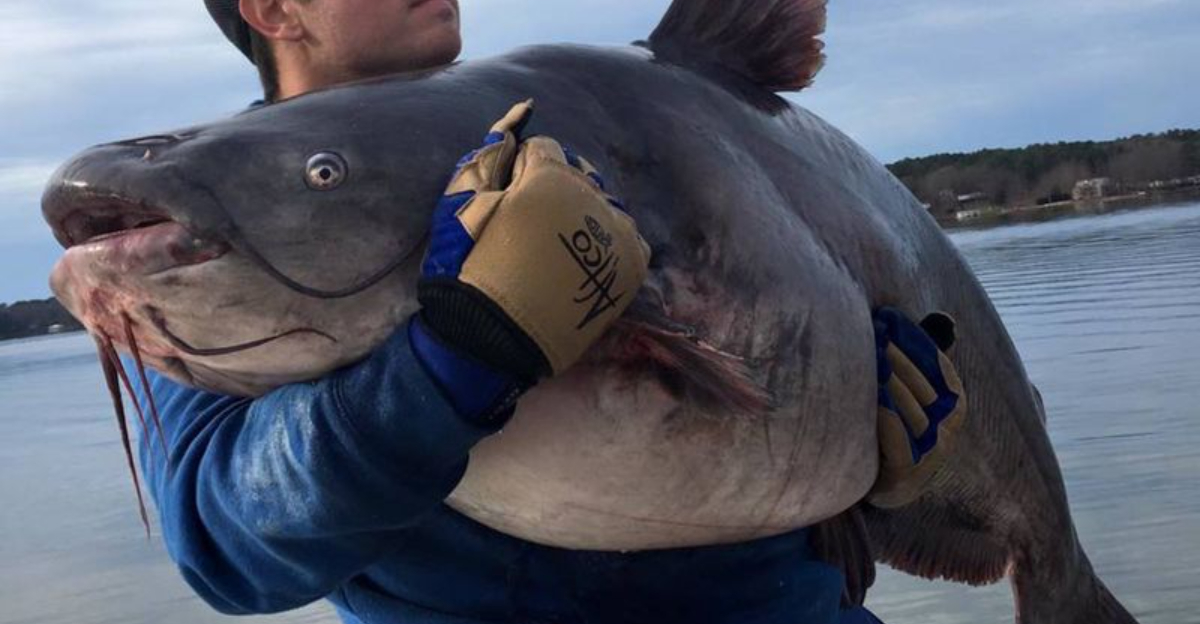
Fishing enthusiasts across America have hauled in some truly massive catches over the years. From prehistoric-looking gar to speedy sharks, these record-breaking fish demonstrate the incredible diversity and size potential of aquatic life in U.S. waters.
Grab your fishing gear and imagination as we explore the most jaw-dropping catches ever recorded from our lakes, rivers, and coastal waters.
1. Alligator Gar – 283 lbs, 8 ft (Texas, 2023)
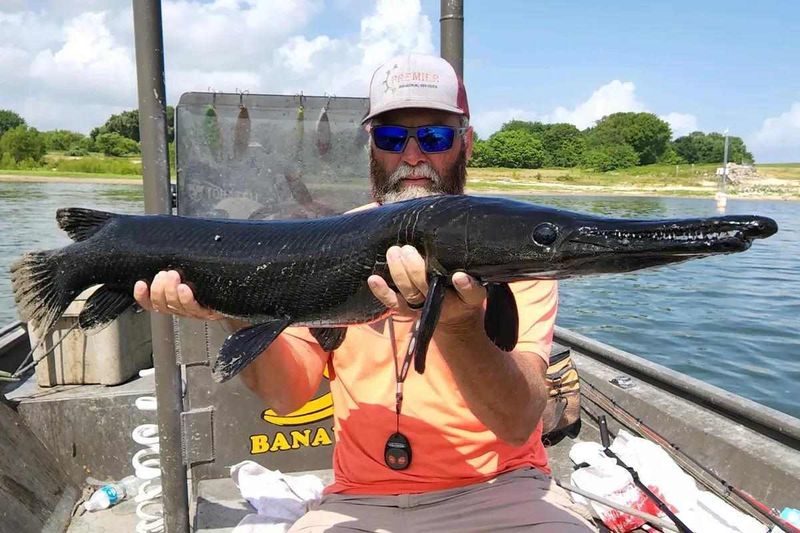
Art Weston’s patience paid off magnificently on Lake Livingston. Using just a 6-pound test line—equipment typically meant for much smaller fish—he engaged in an epic 4-hour battle with this prehistoric-looking monster.
The ancient species dates back 100 million years, earning its name from its alligator-like snout and fearsome teeth. Despite their intimidating appearance, alligator gar rarely attack humans.
2. Bluefin Tuna – 1,229 lbs (Massachusetts, 1984)

Marlene Goldstein shattered expectations off Cape Cod with a tuna larger than a grand piano. Her record-setting bluefin represents the pinnacle of sport fishing achievement in North American waters.
These powerful swimmers can reach speeds of 40 mph and dive over 3,000 feet deep. Sadly, bluefin populations have declined dramatically due to overfishing, making catches of this magnitude increasingly rare.
3. Atlantic Blue Marlin – 1,228.5 lbs (North Carolina, 2008)
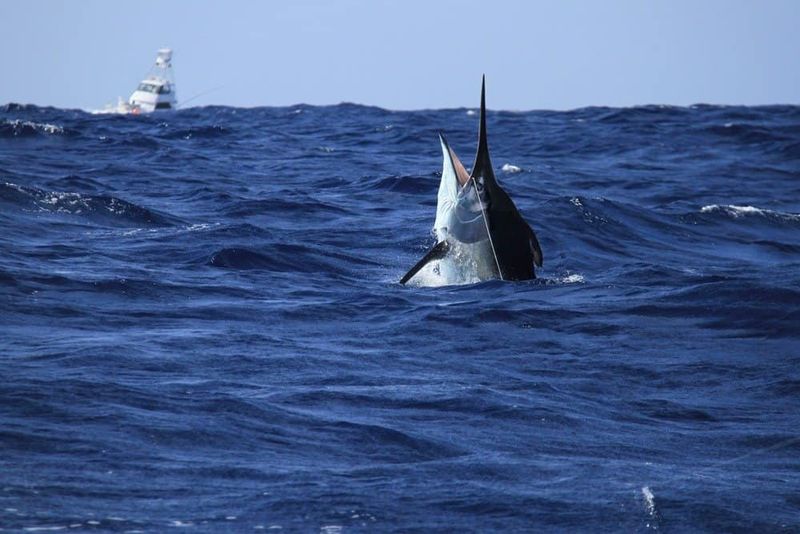
Trey Irvine’s heart-stopping battle with this ocean giant became instant fishing legend along the Carolina coast. The marlin’s spectacular aerial displays and powerful runs tested both equipment and angler to their limits.
Blue marlins are among the fastest fish in the sea, capable of bursts exceeding 60 mph. Their distinctive cobalt-blue topside and silvery-white belly make them among the most beautiful gamefish in the ocean.
4. Shortfin Mako Shark – 1,221 lbs (Massachusetts, 2001)
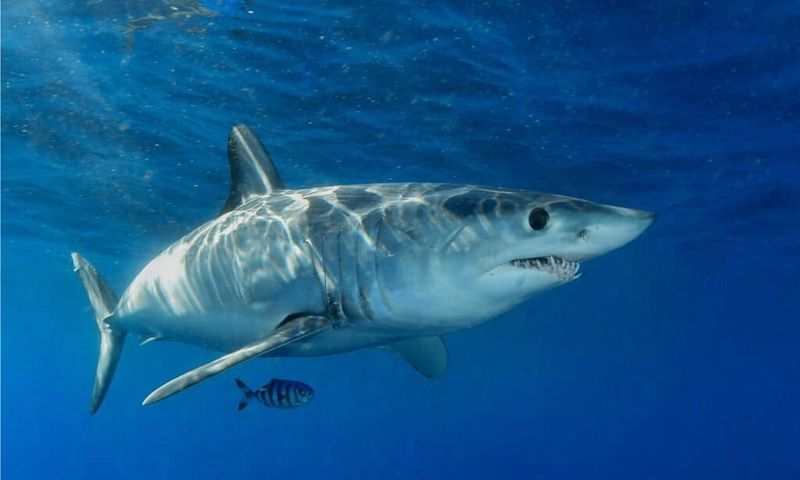
Luke Sweeney never anticipated hooking the ocean’s Ferrari when his line suddenly screamed off the reel. Massachusetts waters produced this speed demon that fought with the intensity only makos are known for.
Shortfin makos can reach speeds of 60 mph, making them the fastest sharks in the world. Their incredible jumping ability—often clearing 20 feet above water—creates unforgettable moments for anglers lucky enough to hook one.
5. Black Marlin – 1,205 lbs (Hawaii, 1980)
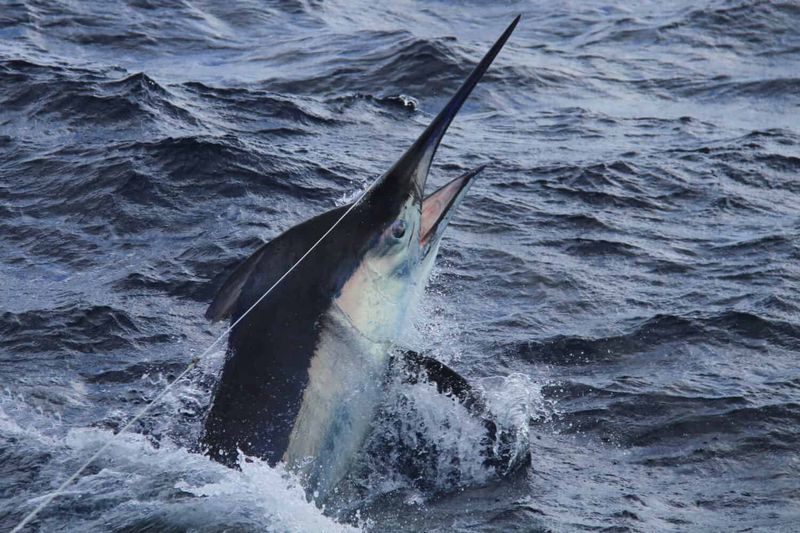
Lei Aloha’s legendary Hawaiian catch still inspires big-game anglers four decades later. The massive black marlin took her small boat on a “Nantucket sleigh ride” for miles before finally surrendering.
Black marlins are the largest of all billfish species, capable of reaching speeds over 80 mph. Unlike their blue cousins, they have rigid pectoral fins that cannot fold against their bodies, giving them a distinctive appearance when brought alongside a boat.
6. Goliath Grouper – 680 lbs (Florida, 1961)
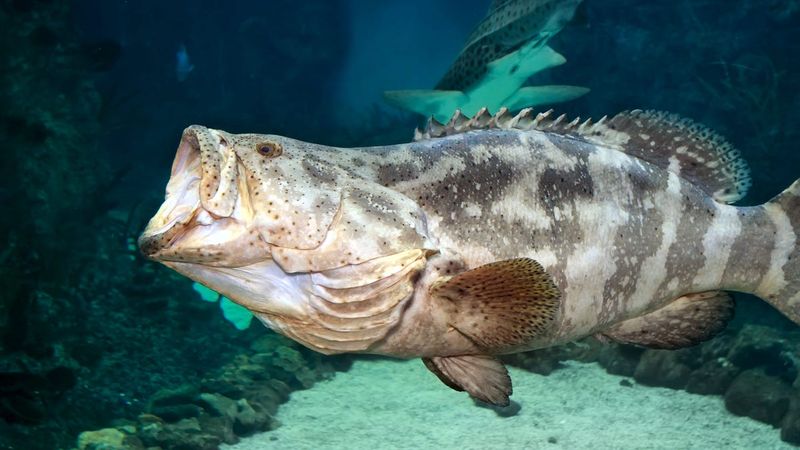
Lynn Joyner’s Fernandina Beach monster truly lived up to the biblical name of its species. Hooking this behemoth was just the beginning—landing it required strength, strategy, and sheer determination few anglers possess.
Goliath groupers can live 50+ years and produce a distinctive booming sound audible for great distances underwater. Once fished to near extinction, they’re now protected, with catches like Joyner’s unlikely to be repeated legally.
7. Blue Catfish – 143 lbs (Virginia, 2011)

Richard Nicholas Anderson’s Kerr Lake leviathan shattered previous records for America’s largest catfish species. The whiskered giant measured over 5 feet long with a girth that would challenge a grown man’s embrace.
Blue catfish were introduced to Virginia waters in the 1970s as sportfish. They’ve since become invasive predators, with specimens over 100 pounds increasingly common. Their whiskers (barbels) contain taste buds that help them locate food in murky waters.
8. Flathead Catfish – 123 lbs (Kansas, 1998)
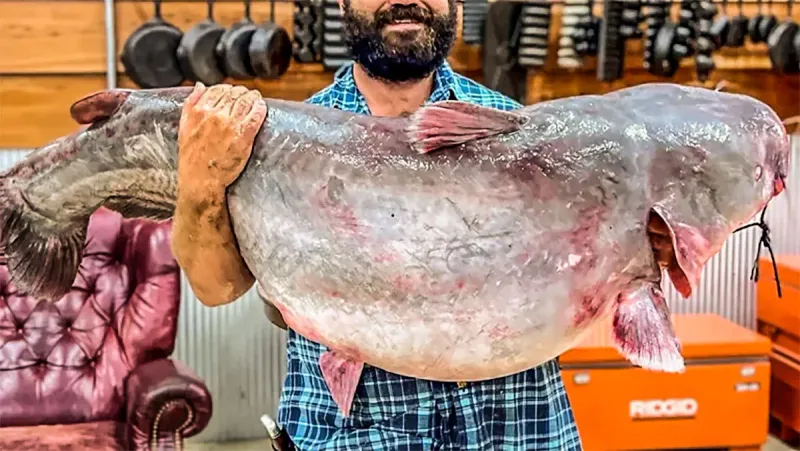
Ken Paulie’s Kansas catch proved that heartland waters hold monsters too. The flathead’s enormous mouth could easily swallow a basketball—a testament to its voracious appetite as an apex predator.
Unlike other catfish species, flatheads are almost exclusively carnivorous, feeding primarily on live fish rather than scavenging. Their flattened head shape and protruding lower jaw give them their distinctive name and appearance.
9. Lake Sturgeon – 193 lbs (Michigan, 1974)

Joe Maka Jr.’s Michigan sturgeon represents a living fossil that’s swam unchanged since dinosaurs roamed Earth. The prehistoric appearance of this armored giant—with its shark-like tail and vacuum-hose mouth—makes it one of fishing’s most unique trophies.
Lake sturgeon can live over 100 years and don’t reach sexual maturity until age 15-25. Their distinctive row of bony plates (called scutes) provides protection while their sensitive barbels help locate food on lake bottoms.
10. Paddlefish – 164 lbs (Oklahoma, 2021)
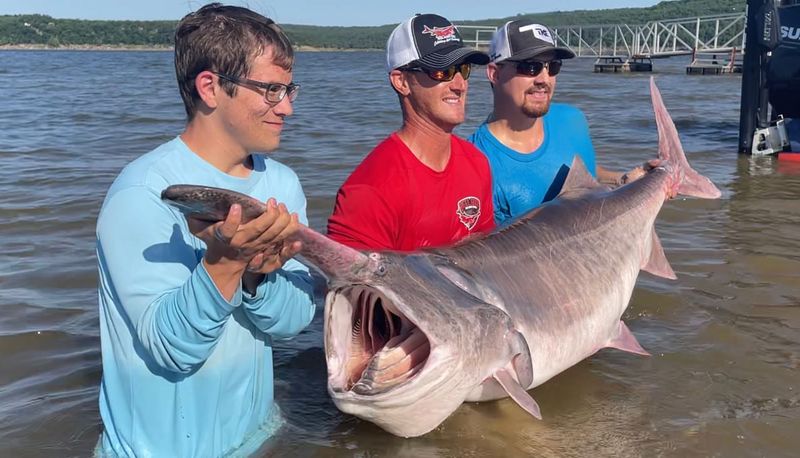
Grant Rader couldn’t believe his eyes when this prehistoric-looking giant surfaced in Oklahoma waters. The paddlefish’s distinctive elongated snout—making up nearly one-third of its body length—serves as a specialized feeding tool.
Often called “spoonbills,” paddlefish are filter feeders that swim with mouths open to strain tiny zooplankton. They’re among the oldest surviving fish species, dating back 65 million years, with only one other living relative found in China.
11. Alligator Gar – 327 lbs (Mississippi, 2011)
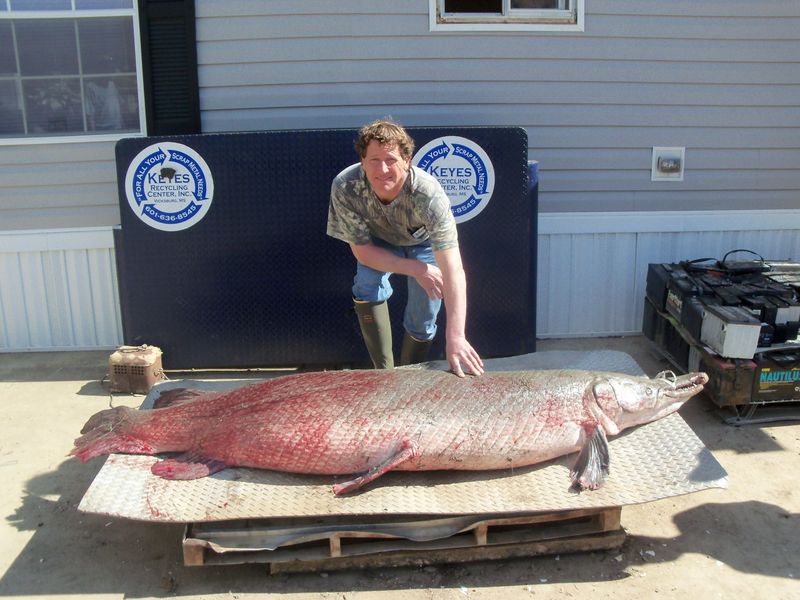
Kenny Williams wasn’t even targeting this monster when it tangled in his net at Lake Chotard. The accidental catch revealed the true potential size of these ancient predators that once roamed much of the Mississippi River basin.
Alligator gar possess toxic eggs as a defense mechanism against predators. Their double row of teeth and armored scales made them nearly impervious to prehistoric predators, allowing them to survive virtually unchanged for millions of years.
12. Halibut – 459 lbs (Alaska, 1996)

Jack Tragis battled this Alaskan doormat for hours near Unalaska Bay. The flatfish was wider than a kitchen table and required special equipment just to bring it aboard.
Pacific halibut begin life swimming upright like normal fish, but undergo a remarkable transformation where one eye migrates to join the other on the same side. They can live 50+ years, with females growing significantly larger than males.
13. Tiger Shark – 1,323 lbs (Florida, 2019)
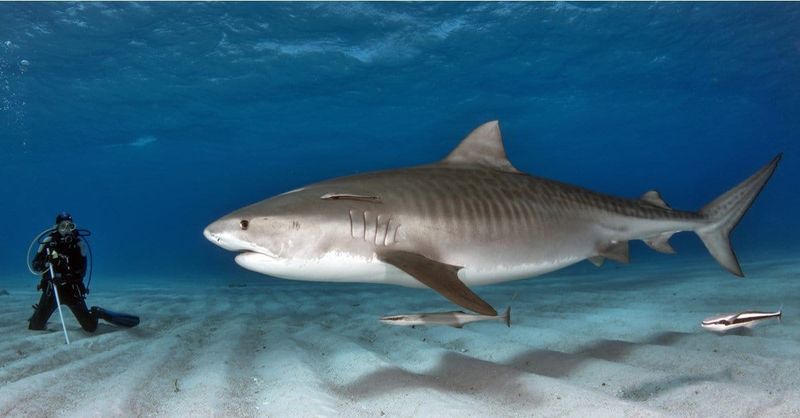
Florida’s coastline yielded this apex predator that tipped scales beyond belief. Though not officially recognized by record-keeping organizations, this tiger shark’s size demonstrates why these striped hunters command respect.
Tiger sharks earn their name from distinctive dark stripes visible on juveniles that fade with age. They’re known as “garbage cans of the sea” for eating almost anything—license plates, tires, and other inedible items have been found in their stomachs.
14. Atlantic Blue Marlin – 1,402 lbs (Brazil, 1992)
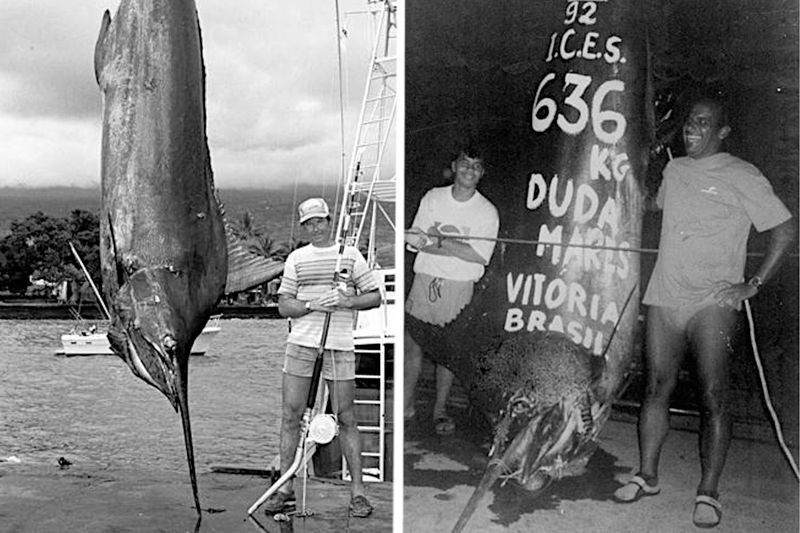
While not from U.S. waters, this Brazilian behemoth showcases the ultimate size potential blue marlins can reach. The world-record catch exceeded the weight of a compact car and required specialized heavy tackle to land.
Female blue marlins grow significantly larger than males, with the biggest specimens always being female. Their incredible speed and fighting ability make them the ultimate prize for big game anglers worldwide, often jumping dozens of times during a prolonged battle.
15. Mako Shark – 926 lbs (New Jersey, 2017)
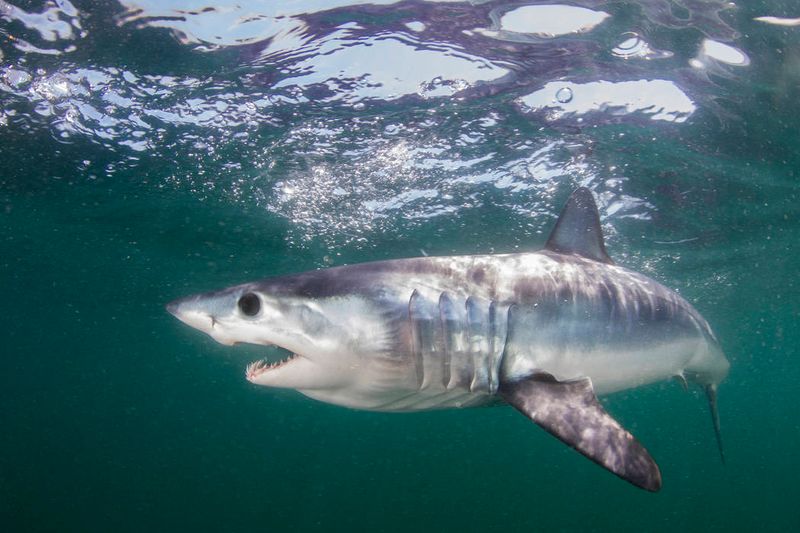
A crew fishing the Hudson Canyon struck silver with this torpedo-shaped predator off New Jersey’s coast. The mako’s aerial acrobatics and lightning-fast runs created an unforgettable battle before it was finally subdued.
Mako sharks are prized for both their fighting ability and their meat, considered among the best-tasting of all sharks. Their incredible metabolism generates body heat allowing them to maintain temperatures up to 10°F warmer than surrounding water—a rare trait among fish.






